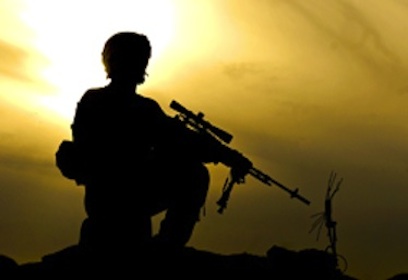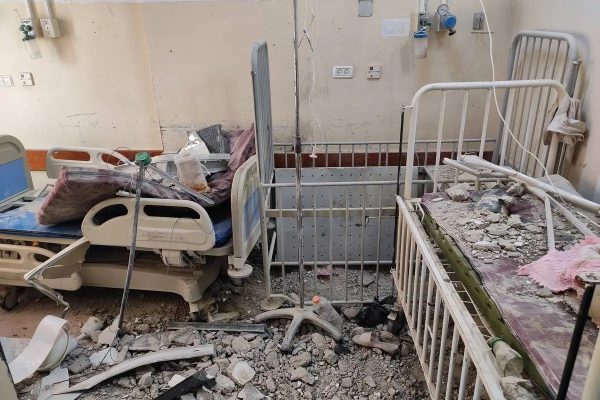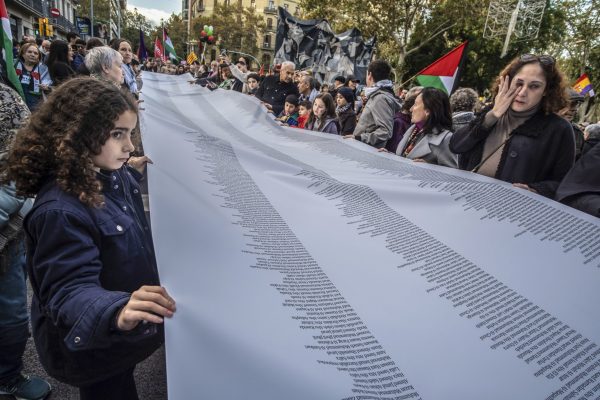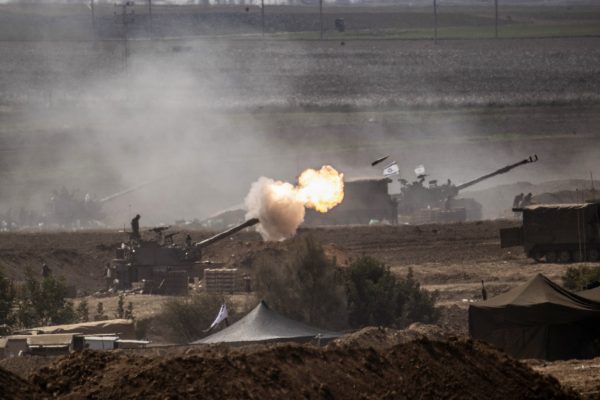Since the March 11 massacre in Kandahar, in which Staff Sergeant Robert Bales allegedly killed sixteen civilians, there’s been a distinct increase in tension in Afghanistan. Rocket attacks on NATO bases in the south are on the rise, according to multiple U.S. service members currently deployed there. On March 14 an Afghan employee of Camp Bastion deliberately drove a truck into a group of soldiers as Defense Secretary Leon Panetta’s plane was landing there. That same day 200 or so U.S. Marines were told to disarm before going into a Camp Leatherneck tent to hear Panetta speak. And the Taliban have walked away from negotiations, a process American and NATO diplomats have been cultivating for months.
At a March 14 press conference, President Obama and British Prime Minster David Cameron stressed that the shooting would change nothing, though they are accelerating the changeover of NATO forces from a combat to a support role in anticipation of a full exit in 2014. There are currently about 90,000 American troops in Afghanistan—down from 101,000 last summer, with plans to draw down to 68,000 by September.
At least some veterans and soldiers agree that the incident needn’t be a turning point. “This only has strategic ramifications if we decide it does,” Andrew Slater, a former Green Beret officer with multiple deployments to southern Afghanistan, told me. “Right now it sounds like it’s just one guy losing his mind, and it would be a mistake to draw too many conclusions from this, in terms of what’s happening across the country.” He also suggested that the accidental Koran burnings last month will resonate far longer with the Afghan people than what happened in the Panjwai district of Kandahar—the complete inverse of the reaction stateside.
On the tactical and operational levels, too, the murders might have little impact. Commenting anonymously in order to speak more candidly, a U.S. Army company commander currently in Afghanistan wrote in an email, “I don’t see this changing too much, day-to-day. We’re already being asked to do the impossible, this just adds to it.”
The notion that the shooting will generate a renewal of hostilities is far-fetched because it’s difficult to restart something that’s never stopped. “[Panjwai has] always been one of the most violent parts of Kandahar,” Slater said, “in ’04 and ’05, we were doing big clearing campaigns in that valley.” After a pause, he added, “That was seven years ago.”
‘We’re already being asked to do the impossible,’ said one company commander, ‘this just adds to it.’
This constant state of violence was a familiar refrain among veterans of Afghanistan I spoke with. João Hwang, a former U.S. Army counterintelligence agent who served there in 2003–04, told me about a Panjwai leader who tried to establish a bazaar in the area to promote trade, only to be killed, Hwang believes, by the Taliban, which has a stranglehold on the area.
But at least one of the guiding concepts of the war is going to have to change. When the U.S. military began stressing the importance of counterinsurgency operations in Iraq in 2007, the “strategic corporal” became all the rage, a phrase so overused it emerged as the camo equivalent of “synergy.” The idea is that the split-second tactical decisions of lieutenants, sergeants, corporals, and privates can carry strategic-level consequences. Twenty-year-old kids with rifles were given crash courses in ambassadorship, social work, and Middle Eastern history. Sometimes it worked. Sometimes it didn’t.
Five years later, the inherent limitations of the strategic corporal are being revealed in Afghanistan. The shooting wasn’t carried out by a kid; the alleged killer is 38, a three-tour veteran of Iraq who had spent eleven years in the Army. That an experienced soldier would do such a thing shows all the more starkly that the promise of strategic-corporal training is slimmer than military leaders had hoped. It takes many to build. It just takes one to destroy.
And there is little question that the shooting and other recent events are affecting perception of the war in the United States and in Afghanistan. Panjwai has pundits recalling 1968’s My Lai Massacre, in which at least 347 Vietnamese civilians were killed by a U.S. task force. The events are not really parallel, but that hasn’t stopped the Vietnam comparisons. Former Assistant Secretary of State Philip J. Crowley—who resigned in March 2011 after criticizing the Pentagon’s alleged mistreatment of Bradley Manning, accused of spreading secrets to the Web site Wikileaks—took to Twitter as news of what happened in Panjwai came out. “This is the Tet moment in Afghanistan,” Crowley wrote. “The string of recent incidents will send public opinion in both countries into permanent decline.”
Time will tell what effect that decline might have on the soldiers in the region. The company commander who thought the shooting would itself have little impact was less certain about the overall trajectory of the conflict. “That’s for the historians,” he wrote. “We’re just going to keep grinding away, doing our best.”
And what does that entail exactly, post-shooting?
“We went around apologizing to the tribal leaders, reminding them this was not reflective of America’s military, reminding them of our dedication to their people and their villages. Most of them just nodded and didn’t say much. One said, ‘The Russians told us the same things.’ I didn’t really know how to respond to that.”








